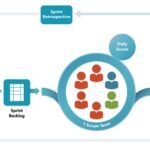
Imagine a tireless brainstorming partner, a walking encyclopedia that can translate languages, summarize complex ideas, and even generate new inventions. This isn’t science fiction; it’s the reality of large language models (LLMs) and the power they bring to innovation.
These models, trained on massive datasets, can create entirely new content: text, images, and even code. Think of ChatGPT, Midjourney, or DALL-E 2: these popular platforms are just the tip of the iceberg of Generative Artificial Intelligence (gAI).
An article published by the Swedish Center for Digital Innovation (SCDI) at Umeå University (Sweden) delves into a specific type of gAI: large language models (LLMs) used in chatbots that can be employed for innovation. Though still in their infancy, LLMs are generating excitement in business circles. But, like any powerful tool, LLMs are double-edged swords.
The rise of generative AI (gAI)
gAI is a branch of artificial intelligence focused on creating new content, such as text, code, or images. LLMs, a type of gAI, are revolutionizing how we interact with information. Trained on massive datasets, these AI chatbots can not only answer your questions but also generate creative text formats, translate languages in real-time, and even write different types of creative content.
The need for caution: hallucinations and hype
While LLMs are immensely promising, they are still in development and prone to inaccuracies. These “hallucinations” may seem believable, but the models don’t grasp the true limits of their knowledge. Additionally, the conversation around gAI is often polarized, with overhyped claims and dystopian fears of robots taking over.
The research question: How LLMs facilitate innovation
The study explores how LLMs can support innovation by examining academic research and practical engineering examples using tools like ChatGPT 3.5 Turbo. Researchers delve into:
- The development and features of gAI and LLMs.
- A framework describing how LLMs enable the creation of innovative solutions for organizations. (The section includes practical examples using ChatGPT).
- Managerial implications for companies looking to harness LLMs for innovation.
- Final observations on the future of LLMs and business innovation.
The power of LLMs: understanding the mechanisms
The study posits four basic mechanisms through which companies can leverage LLMs:
- Translation: LLMs can bridge the language gap, translating text from one language to another with impressive accuracy.
- Summarization: They can condense complex information into concise summaries, perfect for quickly grasping the essence of an article or report.
- Classification: LLMs can categorize information, helping you sort through large amounts of data and identify patterns.
- Amplification: They can take an idea and generate variations, expanding concepts and fostering creative thinking.
The LLM innovation framework: context and content
LLMs excel in two key areas:
- Context awareness: They understand the relationships between words, concepts, and the overall meaning of a text.
- Content awareness: They can generate different creative text formats, translate languages, and informatively answer your questions.
The true power of LLMs lies in combining these capabilities. They can “understand” the context of a problem and then “amplify” existing ideas to generate innovative solutions.
Unlocking innovation with LLMs
Below are some ways organizations can harness LLMs to drive innovation:
- Brainstorming: LLMs can help generate new ideas by analyzing existing market trends and user data. Imagine sharing ideas with an AI virtual partner who can not only understand your industry but also suggest creative solutions based on vast knowledge sets.
- Content creation: LLMs can craft engaging marketing texts, translate legal documents, or even write different sections of a business proposal, all while maintaining a consistent tone and style.
- Product development: LLMs can analyze user feedback and suggest improvements to existing products or even propose entirely new product features based on identified user needs.
A guide for managers
So, how can you leverage LLMs for innovation in your organization? Below are the study’s recommendations for managers:
- Start small: Begin with well-defined, low-risk projects to explore the potential of LLMs.
- Data is king: The quality and relevance of your training data significantly impact LLM performance. Invest in data exploration and preparation.
- Scaling up: As you gain experience, integrate LLMs with existing workflows and consider creating custom chatbot interfaces.
- Empower engineers: Educate your team on how to craft effective prompts—the instructions that guide LLMs. The better the prompts, the better the results.
The art of prompt engineering
To unlock the true potential of LLMs, companies must master the art of “prompt engineering.” Here are some tips:
- Start specific: Don’t ask vague questions. The clearer your prompt, the more focused and relevant the LLM’s output will be.
- Data is king: The quality of your results largely depends on the quality of the data you provide to the LLM. Ensure your data is relevant and well-organized.
- Embrace experimentation: Don’t be afraid to experiment with different prompts and approaches to find what works best for your specific needs.
Conclusion
This study explored how large language models (LLMs) can be leveraged for innovation in organizations. Here are the key takeaways:
- Responsible AI management is crucial: While AI offers immense potential for innovation, responsible management practices are essential. Human oversight and collaboration are key to unlocking this potential.
- Understanding gAI and LLMs: The study highlights the unique capabilities of gAI and LLMs compared to earlier forms of AI. These distinctions are crucial for understanding how they facilitate innovation.
- Driving innovation through 4 mechanisms: The study identifies four key mechanisms through which LLMs can drive innovation: translation, summarization, classification, and amplification.
- Content and context awareness: Understanding AI capabilities in terms of context awareness (relationships between concepts) and content awareness (vast knowledge base) is essential.
- LLMs for amplifying innovation: By harnessing the amplification mechanism of LLMs, we can stimulate creative thinking, accelerate innovation processes, and make these tools more accessible.
Ultimately, LLMs represent a significant advancement in gAI. By understanding their mechanisms, adopting the LLM innovation framework, and implementing these practical tips, organizations can unlock a new era of creativity and problem-solving. So, the next time you have a brainstorming session, consider inviting an “LLM” to join the team. You might be surprised by the innovative ideas that emerge!
Contact
Leif Sundberg
Swedish Center for Digital Innovation (SCDI), Umeå University
Umeå, Sweden
Email: leif.sundberg@umu.se
Reference (open access)
Sundberg, L., & Holmström, J. (2024). Innovating by prompting: How to facilitate innovation in the age of generative AI. Business Horizons. https://doi.org/10.1016/j.bushor.2024.04.014
Editor and founder of “Innovar o Morir” (‘Innovate or Die’). Milthon holds a Master’s degree in Science and Innovation Management from the Polytechnic University of Valencia, with postgraduate diplomas in Business Innovation (UPV) and Market-Oriented Innovation Management (UPCH-Universitat Leipzig). He has practical experience in innovation management, having led the Fisheries Innovation Unit of the National Program for Innovation in Fisheries and Aquaculture (PNIPA) and worked as a consultant on open innovation diagnostics and technology watch. He firmly believes in the power of innovation and creativity as drivers of change and development.





